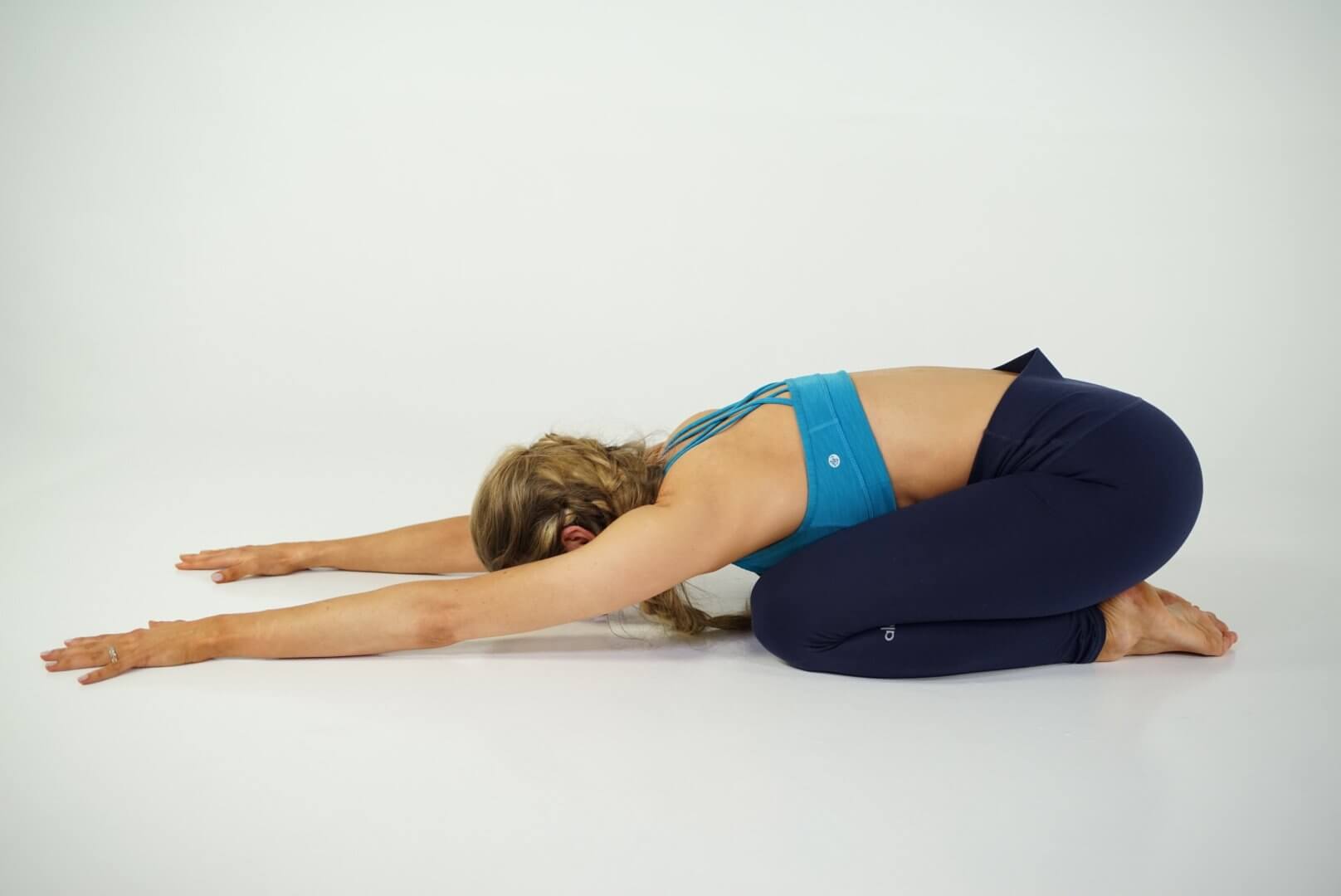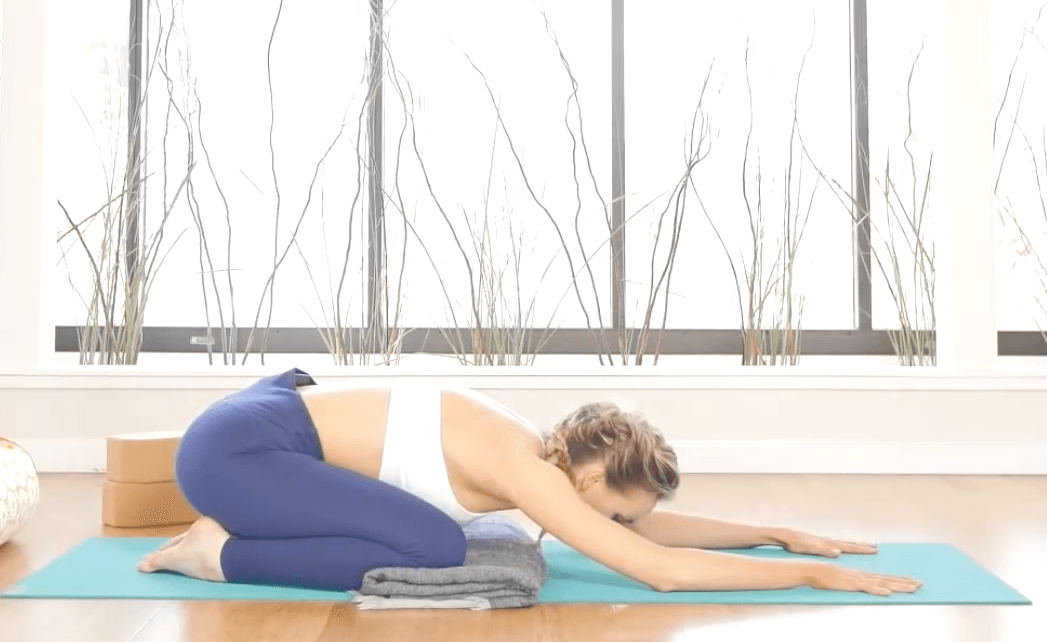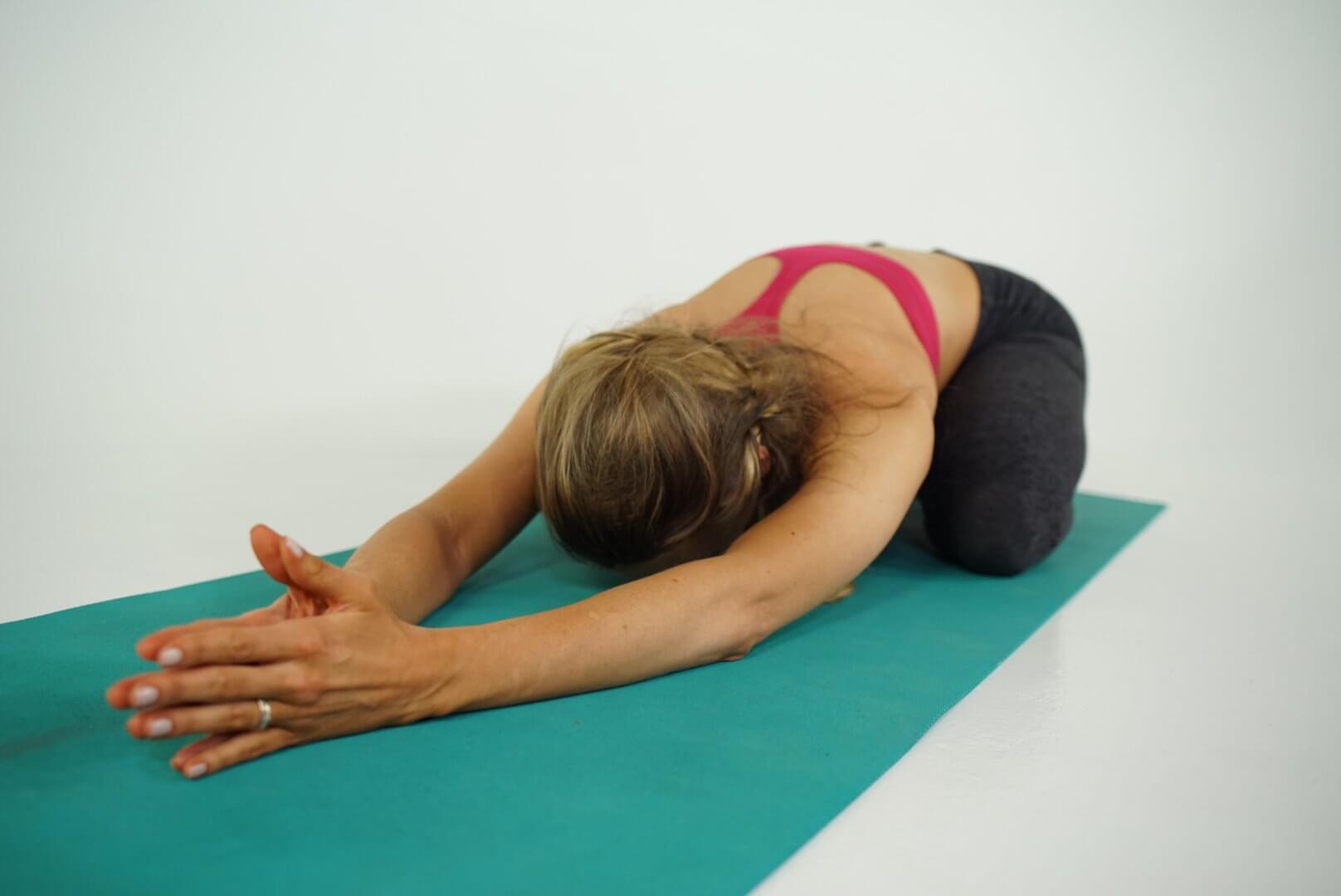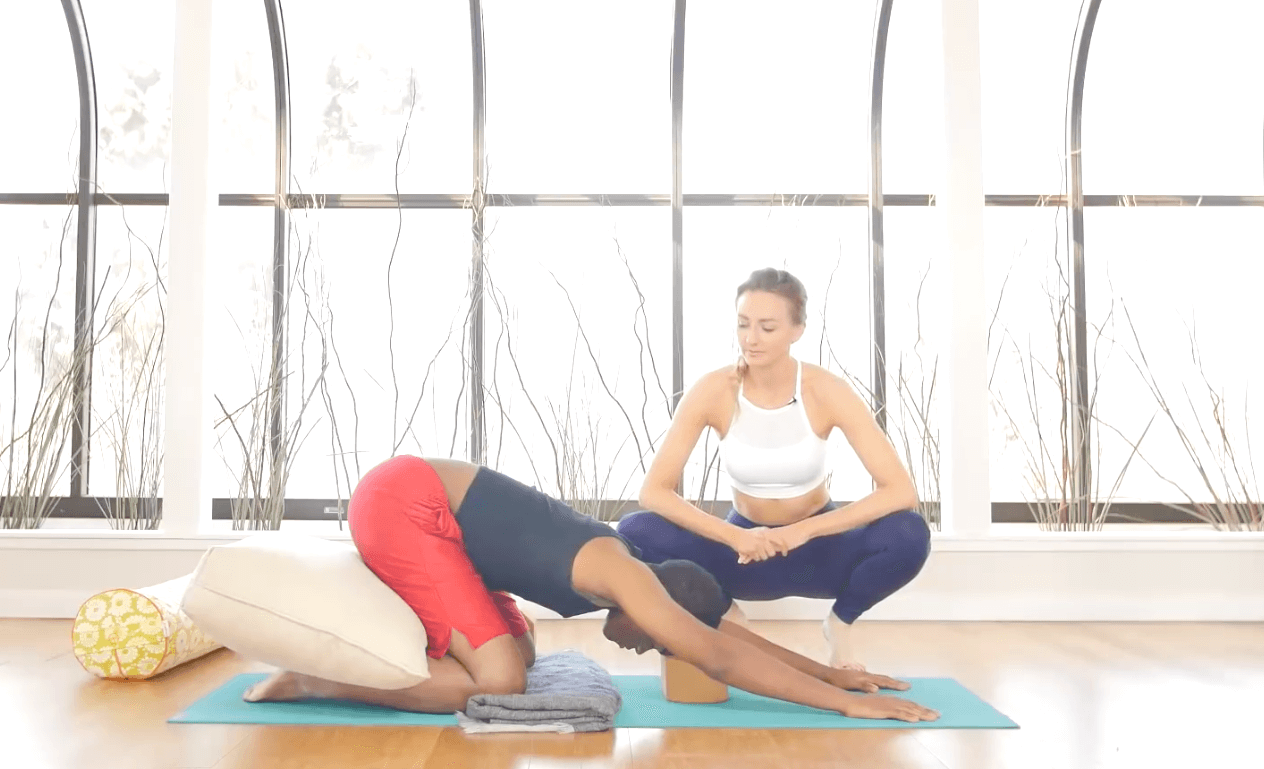(Balasana): Techniques, Benefits, Variations

Child’s Pose Prep & Practice
1
Beginning on hands and knees, keep knees together or bring big toes toward each other and knees apart. Sit back, bringing hips toward heels. On an exhalation, lay your torso on or between your thighs, head and arms resting onto your mat, face and palms down.
2
Hips extend back and down toward heels, low back rounds and belly releases. Chest rounds, upper back releases and shoulders soften away from the ears.
3
Breathe into your low back, softening, expanding and creating space. Bring elbows wide and fingers to touch, releasing and softening shoulders even more. Breath is steady, head is heavy, back of the neck long, gaze soft or eyes closed.
4
To come out of the pose, walk the hands in toward the body, sitting back in Hero Pose (Virasana) or Easy Seat (Sukhasana)



Variations/Modifications
- Block under the head
- Block or blanket between heels and seat
- Bolster to support and elevate upper body
- Arms by sides, palms up or holding onto heels
- Fingers spread, arms active
Physical, Mental and Emotional Benefits
- Cooling
- Draws awareness inward
- Soothes the nervous system
- Encourages breath in the back body
- Opens the back gate of the heart
- Releases glutes, hips, hamstrings and muscles around the knees
Contraindications
- Knee or Hip Injury or Replacement
- Foot or Ankle Injury or Sensitivity
- Pregnancy (last trimester)
- Significantly Low Blood Pressure
Thoughtful Sequencing
Child’s Pose (Balasana), Spread fingers and walk hands to top of mat, activating muscles of arms and hands. Walk hands to the right, pause for 3-5 breaths, walk hands to the left, pause 3-5 breaths, come back to center. Bring fingers to touch, elbows wide and rest.
Try Child’s Pose On The Blog
A Few Notes
Child’s pose is widely known as a resting pose. The action of bowing to the earth and lowering the forehead and torso to the ground has a calming effect on the mind and the body. This can be a restful way to begin a yoga practice, especially first thing in the morning.
The easiest way to come into child’s pose is to kneel and sit on your heels, with your big toes together, and open your knees wider than your hips. This may already start to stretch your hips, thighs, and ankles. Then begin to stretch your arms forward, leaving your buttocks and tailbone heavy to the heels, lowering your chest, and forehead to the floor at the top of your yoga mat. Having the knees wide stretches the hips and thighs generously.
As this is a resting pose, you want to ensure your shoulders are as comfortable as possible, whether this is with your arms stretched out forwards to the top of your mat, finding length in the right side and left side of the torso, or with your hands reaching behind, towards the ankles, with your shoulders resting on top of your knees, allowing the shoulder blades to fully soften.
If you prefer to have the arms stretched out in front of you, have your palms facing downwards and grounded to the floor, however, if you prefer the arms by the sides of your legs, have your palms facing upwards, to allow a generous inwards rotation of the shoulders.
Ideally, you want to have your forehead on the floor, so that you can fully relax the neck, allowing the spine to release and relax too. When you are able to relax the weight of the head, you can release tension and neck pain and allow the breath to aid in finding length and space in the spine and the torso. If this is unattainable, you can use props such as a block, cushion, or even just your forearms.
If you suffer from lower back pain, child’s pose can help ease these symptoms.
However, child’s pose isn’t a deliciously, comfortable yoga pose for every person. There are a few modifications. If you get pain in the knees when trying to ground your buttocks to your feet, one way to ease this is to place a rolled-up blanket behind the backs of your knees, to decrease the angle at which they are bending. You can also adjust the position of the knees, by bringing them closer, adjust the position of the arms, or perhaps bending the elbows, and using props under the head if it doesn’t reach the floor.
In Yin yoga classes, you may stay in child’s pose for up to 5-10 minutes. One variation of child’s pose to make it even more comfortable is to straddle a bolster and rest your head and torso along the top. This gives you full support to let go and release the front and sides of the torso. This can be incredibly soothing, allowing the mind and body to be still, a bit like a cozy meditation.
In more yang styles of yoga classes, child’s pose may be used as a pause, a ‘break’, before continuing with a yoga flow.
Want more yoga pose tutorials? See more in my Yoga Pose Directory.
Next Steps
- Check out my YouTube channel and find some yoga classes that you can try out for yourself!
- Explore my knowledge hub for How to Become a Yoga Teacher
- Attend a 200 YTT info session to see what else you’ll learn in my online teacher training.
Fall in love with my 200-Hour teacher training or …
Experience 3 Training Videos from Inside My 200-Hour Online YTT

YOU MIGHT ALSO LIKE
- What is Yoga Alliance and Do I Need an RYT Certificate to Teach Yoga?
- 200 Hour Yoga Teacher Training: What To Expect, How To Prepare, Where To Do It
- Is An Online Yoga Teacher Training Worth The Investment?
- Levels of Yoga Certification: What’s The Difference Between 200-, 300-, and 500-Hour YTT Courses?yoga certification
- What Does A 500 HR Yoga Teacher Training Course Cover? Standards and Benefits
- A Guide to The Best Yin Yoga Teacher Training Programs
- Hatha Yoga Teacher Training Certification: Immersion, Online, or in Studio?
- Wanna Teach Kids Yoga? Find A Fun Childrens Yoga Teacher Training!
- Ashtanga Yoga Teacher Certification: Where And How To Get It
- How To Know If An Online YTT Is Legit: 8 Things To Look For
- Want to Become a Certified Vinyasa Yoga Teacher? Read This.
- How to Choose a Yoga Teacher Training (That Won’t Rip You Off)
Learn how to do 11 of the most popular yoga poses correctly. Free video + PDF download.










